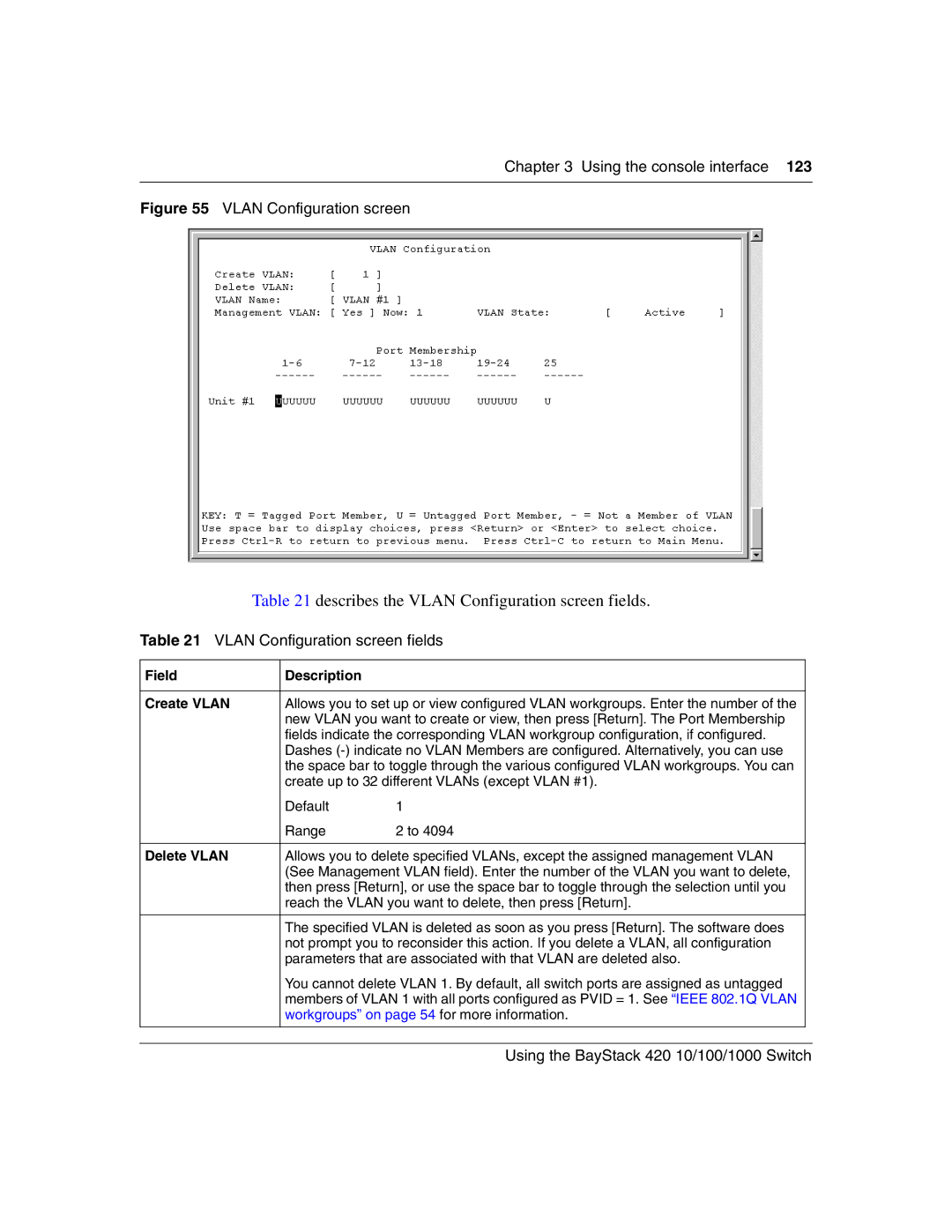
Chapter 3 Using the console interface 123
Figure 55 VLAN Configuration screen
Table 21 describes the VLAN Configuration screen fields.
Table 21 VLAN Configuration screen fields
Field | Description |
|
|
| |
Create VLAN | Allows you to set up or view configured VLAN workgroups. Enter the number of the | |
| new VLAN you want to create or view, then press [Return]. The Port Membership | |
| fields indicate the corresponding VLAN workgroup configuration, if configured. | |
| Dashes | |
| the space bar to toggle through the various configured VLAN workgroups. You can | |
| create up to 32 different VLANs (except VLAN #1). | |
| Default | 1 |
| Range | 2 to 4094 |
|
| |
Delete VLAN | Allows you to delete specified VLANs, except the assigned management VLAN | |
| (See Management VLAN field). Enter the number of the VLAN you want to delete, | |
| then press [Return], or use the space bar to toggle through the selection until you | |
| reach the VLAN you want to delete, then press [Return]. | |
|
| |
| The specified VLAN is deleted as soon as you press [Return]. The software does | |
| not prompt you to reconsider this action. If you delete a VLAN, all configuration | |
| parameters that are associated with that VLAN are deleted also. | |
| You cannot delete VLAN 1. By default, all switch ports are assigned as untagged | |
| members of VLAN 1 with all ports configured as PVID = 1. See “IEEE 802.1Q VLAN | |
| workgroups” on page 54 for more information. | |
|
|
|
